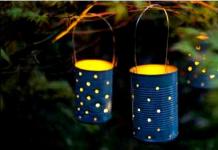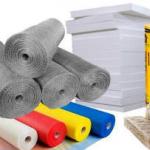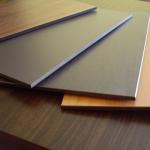The beautiful dahlia is one of the most interesting garden plants. It blooms for quite a long time, which makes it very popular among gardeners. Also, this wonderful autumn-summer flower can be found in interior and wedding floristry.
Dahlias come in a variety of shapes and shades. There are countless varieties of this plant. Thanks to such diversity, you can create the most extraordinary and exclusive flower arrangements with dahlias. The dahlia goes well with wildflowers, garden flowers, such as, and classic flowers, such as callas, lilies and roses. Interesting bouquets can be created if you take peonies or peony-shaped roses and dahlias in a delicate pastel shade as a basis. An unusual and sophisticated wedding bouquet can be composed of white dahlias, bud roses and cornflowers. Foamiran dahlia makes wonderful brooches, hair clips and other decorations.
In this master class I will show you how to make dahlias from foamiran of three types and shades. And in subsequent master classes you will find four more equally beautiful flowers, which can be easily made using templates and step-by-step photos. Let's start the MK with a spherical dahlia made of foamiran.
Globular dahlia and dahlia bud from foamiran: step-by-step master class and pattern
To create this spherical dahlia you will need:
- foamiran (I took red, you can choose any other);
- white acrylic paint and a damp cloth;
- iron;
- second glue;
- tape;
- scissors;
- foil;
Dahlia pattern from foamiran

Here is a template for making this dahlia.
How to make a dahlia? Step by step photo

To make a flower we will need 3 petal circles from blank No. 1, for a bud we will also need 3 pieces.

Blanks No. 2, 2 pieces each.

Blanks No. 3, 2 pieces each.

We cut out 2 petal circles for the flower according to blank No. 4.

And 3 petal circles on workpiece No. 5.

From green foamiran we cut out 6 smaller leaves.

And 2 large leaves.

We cut out 2 sepals for the bud and flower.

We find the middle of the petal circles and make cuts parallel to each other. So we cut all the petal circles.

We tint the tips of all petal circles No. 1 and 2 with white acrylic paint and a damp cloth. Tint on both sides.

Petal circles No. 3,4,5 are tinted in the middle.

We process all petal circles using an iron at silk-wool temperature.

Take a piece of foil 8*8 cm and a piece of foamiran. We prepare 2 balls from foil for the center of the flower and bud.

Take a piece of foamiran, heat it on an iron and cover it with foil. This is the middle we will prepare for the flower and bud.

Then we prepare the petal circles. For petal circles No. 4-5, fold the petals in half inward and glue each petal at the bottom.

For petal circles No. 3, the petals of one circle are glued together at the bottom of each petal, for the second petal circle we are glued through one petal. We prepare petal circles No. 3 for the bud in the same way as for the flower. Leave petal circles 1-2 unchanged.

We take the blank and put on the first petal circle and start gluing the petals, glue every 3 petals, glue 4, then glue the middle one of the three. Then all the other petals. Then we glue 2-3 petal circle No. 1, glue all the petals at the base.

Then glue the middle one of the three. Then all the other petals. Then we glue 2-3 petal circle No. 1, glue all the petals at the base.

Glue petal circles No. 2 at the base. This is the middle we got for the flower and bud.

Then we take petal circle No. 3, where the petals are glued one at a time and put it on the core and glue it at the base.

Then we glue the second petal circle No. 3 with all the glued petals below.

We dress and glue petal circles No. 4 at the base.

Then we glue the petal circles No. 5.
Ready-made dahlia bud from foamiran, photo

This is the bud and dahlia flower we got.

Glue the sepals to the dahlias.

We process the leaves with an iron, squeezing them well on the mold. Then we tint with green oil pastels, blending well. We tint the tips of the leaves here and there with brown oil pastels.

We treat the dahlia stem with tape and glue the leaves onto the litons, forming branches. We attach the leaves to the stem.

This is how the sprig of spherical dahlia turned out.
Astro-shaped dahlia from foamiran: master class with step-by-step photos
This dahlia has this name for a reason, because it really is very similar to an aster. By the way, they turn out no less beautiful. But more on that in other master classes, but now let’s start making a dahlia.
To create this type of dahlia you will need:
- purple foamiran for the petals and yellow for the core;
- yellow and purple oil pastels a tone darker than foamiran + sponge;
- iron;
- orange stick for applying veins to the petals;
- second glue;
- wire;
- tape;
- small nail scissors and zigzag scissors;
- elastic band, hairpin or brooch holder;
We start making a flower from the core.

Cut out a strip of 2*20 cm from yellow or lemon foamiran.

We cut it into small fringes, without cutting to the end 0.4 cm - 0.5 cm.

From foamiran in the color of the petals, cut out a strip of 2.5 cm * 30 cm. Cut one side of the strip with zigzag scissors.

We cut the strip along the zigzag step without cutting to the edge of 0.5 cm.

For the petals, cut out rectangles measuring 4 cm. * 1.5 cm - 13 pieces and 3.5 cm * 1 cm - 26 pieces.

We cut out droplet-type petals from rectangles.

Using nail scissors, cut out notches on each petal. You can do two on some of them.

We also make notches on the small petals.

Then we apply texture on the petals with a stick. 3-4 stripes along the petal.

Apply the tint directly with an oil pastel pencil. Apply tint to the top of the petals. We tint all the petals the same on both sides.

We also tint the purple strip with a purple color one tone darker than the foamiran. Apply the tint with a sponge and blend well.

We tint the yellow stripe with bright yellow oil pastels, directly with a pencil.

We begin ironing at silk-wool temperature. We process the purple strip so that it bends slightly, like eyelashes.

We process the small petals by applying them one by one to the iron.

We process large petals like small ones. But additionally we apply the bottom of the petal and slightly extend the stem.

We form the middle of the flower from the yellow strip. We take a thin wire, make a loop on it and begin to glue and wind the strip with fringe. The bottom should be smooth. Then we process the core with an iron. Just press it with your fingers so that it doesn’t fluff up.

Then glue on the purple stripe. We make 3 full circles, as if closing the yellow center. eyelashes look inward. After this, we tear off the strip, turn it over and then glue 2 more circles, but the eyelashes should be facing outward.

Glue small petals in a circle, next to each other. There are 10 pieces in the first row, we glue the second row between the petals of the first row, also 10 pieces.

And the third row, all the other petals are 6 pieces, wherever you see fit.

We glue the large petals in a circle next to each other.
Photo of a finished bud of aster-shaped dahlia

This is the aster-shaped dahlia we got.

We cut out sepals from green foamiran and tint them with green oil pastels. We tint the tips of the sepals with brown pastel.

We process silk - wool on an iron at a temperature. You can twist it slightly between your fingers.

Glue the large sepal.

Glue a hair elastic onto the sepal.
We cut out leaves from green foamiran and process them using an iron and mold. Then we tint them with green oil pastels, shading them well with a sponge, and we tint the edges of the leaves with brown pastels.

To ensure that our elastic band serves us for a long time, we cover the elastic band with leaves.

Then glue the second sepal.

This is the hair decoration we made with dahlia.
How to make a semi-cactus dahlia from foamiran, master class with step-by-step photos
In my opinion, this is one of the most beautiful types of dahlias. We will make it in a bright sunny shade.
So, for a yellow dahlia made of foamiran we will need the following materials:
- yellow foamiran;
- red oil pastel and sponge;
- orange stick for applying texture;
- iron;
- second glue;
- tape;
- scissors;
- hairpin, elastic band or base for a brooch.
We begin work on the dahlia with a template and blanks for the future flower.

To make this type of dahlia, cut out circles of yellow foamiran with a diameter of 9 cm, 8 cm, 7 cm, 6 cm, 3 pieces each. And a strip of white foamiran 2 cm * 15 cm.

Circles with a diameter of 6 cm are divided into 12 parts.

We divide the remaining circles into 8 parts.

And cut out the petals. You can make the tip of the petals round, or, like mine, slightly pointed.

White stripe into stripes, 0.5 cm.

And we also either round the ends or make them slightly sharper.

We tint the strip with oily red pastels. Apply the pastel to a sponge and blend well. Tinting can be applied on one side.

We tint all petals equally. Paint the center of the petal circles, shading from the center to the edge of the petals.

Then we take petal circles with a diameter of 8-9 and apply texture on each petal with a stick. As if outlining a petal.

We take a lighter, fold it along the grooves, heat it up and pinch the ends of the petals.


We take petal circles with a diameter of 6 cm and apply a drop of glue to the middle of each petal and clamp it.

We glue the petals of a petal circle with a diameter of 7 cm at the very base.
We process the strip on an iron at silk-wool temperature, applying it to the iron in parts so that the strips bend like eyelashes.

We take the wire and make a loop and begin to wind and glue the strip. So that the eyelashes look inward, forming the middle of the flower.

We take petal circles with a diameter of 6 cm. We put them on the base and glue them at the base and press the petals.

Glue the second petal circle with a diameter of 6 cm in a checkerboard pattern, lifting the petals.

Glue the third petal circle with a diameter of 6 cm at the base in a checkerboard pattern.

We glue the petal circles 7-8-9 only at the base, placing the petals in a checkerboard pattern.
Ready semi-cactus dahlia

This is the semi-cactus dahlia we made.

We take a universal mount for hairpins and brooches.

Glue the dahlia leaves to the mount using instant glue.

Then glue the dahlia itself.

Here's a brooch - a hairpin.
This master class will be dedicated to the magnificent dahlia flower, which was the most popular among summer residents in the last century. Just as clothing fashion changes, it does the same ruthlessly with flowers. Nowadays it is not particularly customary to give these flowers. But despite the decline in popularity, breeders continued to work on creating new varieties. Thanks to them, varieties of the most fantastic colors and shapes appeared. The fashion for dahlias is slowly returning. For lovers of floral decorations from foamiran, today we invite you to make a wonderful dahlia with your own hands!
Materials and tools for creating a dahlia:
- — bright pink foamiran Silk LUX;
- — green Iranian foamiran;
- - pattern of petals;
- — pastel purple, yellow, green, red-brown;
- - sponge;
- - scissors;
- - buns of different sizes;
- — food foil;
- - toothpick;
- — second glue;
- - glue gun and a stick for it;
- - acrylic white paint;
- - hair elastic;
- - iron.
Attention! Iranian and Chinese foamiran is not suitable for creating this particular dahlia. It must have high temperature adhesive properties.
Dahlia pattern from foamiran
Let's make a pattern. The dahlia will consist of a large number of petals of different sizes. On the pattern, each petal is numbered and the quantity that needs to be cut from the fom is given. By the cells you can judge the size of a given petal.

We cut out petals and a 1.5x20 cm strip from foamiran, which we cut into a fence.

We tint one side of the strip with purple pastel and go over the edge of the petals.

We begin to form the petals. Heat it on an iron, twist it and rub it between your fingers.

We fold the base of the petal as shown in the photo, hold it with one hand and apply this tip to the iron. Our task now is to melt the foamiran. When you feel that the foam has warmed up enough, squeeze this piece with your fingers. It should stick together.

We warm up 1/3 of the petal from the tip and press it with a bubble.

We apply the very tip of the petal (2 mm) to the iron and wait until it warms up completely. We make a tuck. We do the same with all the petals.

Warm up the toothed strip. This must be done carefully so that the cloves do not stick together.

We tint the ends with white paint.

Take a piece of foil approximately 4.5x9 cm.

Roll into a ball.

Flower assembly
Thread onto a toothpick. If you plan to make a dahlia on a stem, then you can immediately glue the thread instead of a toothpick.

Glue a round piece of foamiran onto the top. We cut off the excess so that it does not interfere.

We begin to glue the strip.

Having glued one row, we fix all the petals to the middle.

We wind and glue the remaining strip to the middle.

The initial tint turned out to be not so bright, so we tint it again.

We take the smallest petals under No. 1, tint them in the center with purple pastel.

Distribute evenly and glue them.

We glue the petals under No. 2 with a slight overlap to the base of the center (look at the photo).

The second row is ready.

We glue the petals under No. 3 in a checkerboard pattern.


Glue the next petals in the same way.

We tint the petals under No. 5 purple - draw a line of chalk pastel in the center (don’t touch the tip).

Glue all the petals in a circle.

Add a row of petals at number 6, moving them towards the center of the flower.

The photo shows that there is a depression in the center of the flower (on the reverse side). We will fill it with hot glue.

We tint the petals of the third and fourth circles with yellow (on the front side). Let's make a few strokes. You can add a little greenery to the middle.

Dahlia flower collected.
Attention! If you want to make an interior flower, then instead of a toothpick, first of all you need to glue a wire into a ball of foil. Then make leaves and wrap the stem (wire) with tape, gradually attaching the leaves.
If you want to make a hair decoration from a dahlia flower, then think about which one you want (the method of attachment depends on this).
In this master class we will show you how to attach a dahlia to a hair elastic.

From green fom we cut out six leaves in the form of droplets. After heating it on the iron, make a bulge in the middle and roll the sharp tip between your fingers. We also make a sepal and prepare a strip of 0.5x1.5 cm for fastening.

We cut two “slits” 0.5 cm long in the sepals.

Take out the toothpick and fill it with hot glue. Glue a strip to the rubber band.

We thread the two ends of the strip into the holes that were made in the sepals. Fix with glue. Glue six leaves to the dahlia.

We plant the fastening with an elastic band to the flower. We tint the greens with yellow and red-brown pastels.

A dahlia with an elastic band looks very beautiful on both babies from 6 months and young schoolgirls. The shape of the flower is hemispherical and, despite this, it is quite light.







The master class was conducted by Marina Chentsova.
It is drizzling more and more often outside, and multi-colored leaves dance in circles. But we can prolong the charm of early autumn and lift our spirits with the help of creativity and flower arranging. Let's make a wonderful autumn decoration - the dahlia flower!
Materials:
foamiran (olive, dark green and any color);
wire No. 18;
a piece of cotton wool;
dry pastel.
Tools:
glue gun;
scissors;
universal sheet mold;
iron.

How to make a dahlia with your own hands.
Redraw the patterns and cut out the required number of flower parts. Using template No. 1, cut out 3 pieces. olive color, 1 pc. color and 1 pc. dark green. From dark green foamiran we cut out an arbitrary number of leaves. 1
1
We tint the edges of the petals on both sides with the selected color of dry pastel.
 2
2
Make a loop at the end of the wire and glue in a piece of cotton wool, forming a spherical shape. The diameter of the cotton core is 1.5 cm.
 3
3
First, apply the entire piece to the sole of the heated iron until it begins to curl inward. Then we heat each tip individually. And immediately squeeze each petal inward, as shown in the photo. We do this with all the petals.
 4
4
Next we take on the leaves. We heat them on the soleplate of the iron. We print on the universal sheet mold. To form a central vein, fold the sheet in half lengthwise and heat the vein.
 5
5
Let's start assembling the flower. Glue the olive blank to the cotton center. Try to glue it so as to completely cover the ball. Piercing with wire, we put on the next three olive-colored blanks.
 6
6
Note that the petals are bent inward. So, one by one, from the smallest to the largest, we glue the remaining blanks.
 7
7
Glue blanks 4 and 5 with the bent petals facing outwards. We continue assembly until the last pieces. Be sure to glue them together.
 8
8
We tint the leaves and sepals with dry dark olive pastel. The sepals are ironed in the same way as flower petals. Glue two sepals so that they look down. To make a bud, stop the process at petals #1.
Decoration in 4 stages: dahlia from foamiran
An elegant dahlia will become an integral part of a fashion accessory. Foamiran is a material with which many needlewomen are familiar. It is not only pleasant to the touch, its color palette is diverse, it is an affordable and not very expensive material that can do wonders. Including decorative flowers that will make up any composition you need.
Master class: dahlia from foamiran, what you need
The dahlia is called the king of autumn for a reason. Indeed, many people associate this flower with the charm of autumn. And for autumn decor, such a foamiran flower will be very useful.
To make it you will need:
- Foamiran (color of your choice);
- Templates;
- Scissors;
- A piece of sponge;
- Sharp tweezers;
- Iron;
- Acrylic paint.
 Before you start making a dahlia from foamiran, you need to prepare the materials
Before you start making a dahlia from foamiran, you need to prepare the materials
Most likely, you will have to use ready-made templates or patterns. There are plenty of them on the Internet - choose the one you need and print it out. You can, of course, make your own templates, but if you are not sure, use ready-made ones. In this case, four petal patterns are usually used. All of them are, accordingly, different sizes.
Second step: pattern of a dahlia from foamiran
Take foamiran of the desired color, for example blue. On it, according to the patterns, you need to draw as many petals as are supposed to be in the flower. Each dahlia has its own number of petals, cut out with a margin using all four patterns.
 Patterns for the future dahlia from foamiran
Patterns for the future dahlia from foamiran
Take a petal and pinch it in the middle with tweezers. After this, paint can be applied to the petal on both sides. It is good to use acrylic art paint. When the leaf is sufficiently colored, it can be removed from tweezers. This way all the petals are painted. How exactly to paint, look at the original source - how interestingly colored dahlias are in nature, how simple, subtle, elegant. I couldn't find a better hint.
Dahlia from foamiran: petal formation
The petal must then be heated on an iron, and it must be shaped very quickly, before the material has cooled. You do this manipulation with all the petals. This will take a lot of time, but you need to achieve maximum similarity.
- A ball with a diameter of 30 mm will do;
- First, glue the smallest petals onto it, then the larger petals;
- You can use something else instead of a ball, it’s just the most popular thing that is ideal for these purposes;
- When the small petals are glued, you proceed to larger petals - they are no longer so twisted, they are glued in a checkerboard pattern, but on the pre-processed petals, veins are made with a needle on both sides;
- In the next row, as you might guess, there will be even larger petals;
- So, in the same checkerboard pattern, all the existing petals are glued.
 It is necessary to form a dahlia petal very quickly
It is necessary to form a dahlia petal very quickly
The authenticity of the created image will depend on how carefully the petals are painted and how accurately you glue them. You can cut out a sepal from green foamiran if it is needed in this composition.
How to properly make a dahlia from foamiran: working with the material
If you have not previously worked with foamiran or, as the material is also called, plastic suede, the process of interacting with this material is probably difficult for you. They love foamiran for its incredible plastic properties - it stretches very easily, and most importantly, it easily “remembers” a given shape.
And for suede to gain volume, the material just needs to be heated. The easiest way to do this is with an iron. Some people find small travel irons (collar irons) in the mezzanines, which in this case will be very convenient to work with.
 Working with foamiran is quite easy
Working with foamiran is quite easy
- Plastic suede is very easy to cut with scissors;
- If you use composters for scrapbooking, then you can easily make the most interesting blanks from foamiran;
- The molds used in porcelain floristry also add texture to the workpiece;
- Foamiran is quite easy to paint over, for example, with high-quality acrylic paints (this is necessary for tinting), but pastels are also perfect;
- The easiest way to glue the blanks together is with a heat gun;
- Special glue for foamiran is easy to find in craft stores today;
- The warmth of human hands is the main tool that makes foamiran sparkle with its brightest colors.
It seems that this material is incredibly delicate, that only a very careful, pedantic person can work with it. This is only partly true. In this sense, plastic suede is considered a very rewarding material; even for beginners in this business, crafts turn out to be lively, spontaneous and neat.
Good afternoon, dear readers of our online magazine, today we will learn how to make a beautiful dahlia from foamiran, which can become a wonderful hair decoration. School is coming soon, so each of you will still have time to make your child a beautiful decoration for September 1 and beyond. The author of this master class is Irina Sitnikova.
Everyone probably already knows what foamiran is and many are already doing wonderful work using this wonderful material. Foamiran has the same advantages: it is light, pleasant to the touch and, when heated, easily takes the desired shape. It is also easy to paint and can be painted with any paint. From foamiran you can create various hair decorations, toys, jewelry and much more. Let's try to create a beautiful autumn dahlia flower from this wonderful material. Many people call the dahlia flower the king of autumn, because in autumn, when almost all the flowers have already bloomed, it begins to delight us with its beautiful and bright colors. Thanks to the many varieties, you can make dahlias of different sizes and colors.
To make a dahlia we will need:
* Foamrun of the desired color.
* Scissors.
* Templates.
* Sharp tweezers.
* A piece of sponge.
* Acrylic paint.
* Iron.
Method for making dahlia from foamiran:
First we need to draw a pattern of petals or use Irina’s pattern. Irina used four petal templates to make the dahlia. The photo shows what size the petals should be, I think that no one should have any questions about this. We take a leaf in a cage and draw exactly the same ones, or simply trace it through the monitor, or you can print it out. We choose the most convenient option for you for making petals.

We take foamiran of the color we need and draw the required number of petals on it. Each of you will get a different number of petals, see for yourself. Each dahlia will have a different number of petals.

Take the petal and pinch it in the middle with tweezers, as shown in the photo.

Now we begin to apply paint to the leaf on both sides. Irina painted the leaves with acrylic paint. When the leaf is painted, remove the tweezers.

In this way we completely color all the petals.

Now let's start forming the petals. We heat the petal on the iron and quickly, before it cools down, create this shape for it. Just below watch the video on making these petals.

We do the same with other small petals in the same way.

We do all the other petals a little differently, like this.



Take a foam ball with a diameter of 30 mm. and begin to glue the smallest petals onto it first, and then larger ones. You can use something else instead of a foam ball.

Then we begin to glue larger petals. We glue them in a circle in a checkerboard pattern, only in advance we will make veins on both sides on the treated petals with a needle.


We continue to glue the petals, but larger in size.

So we glue all the petals we have in a checkerboard pattern. We get a beautiful dahlia from foamiran with our own hands.


Using this master class you can make dahlias of different sizes and colors.

Video on making dahlia petals.

Copyright © Attention!. Copying text and photographs can only be used with permission from the site administration and by indicating an active link to the site. 2019 All rights reserved.


















